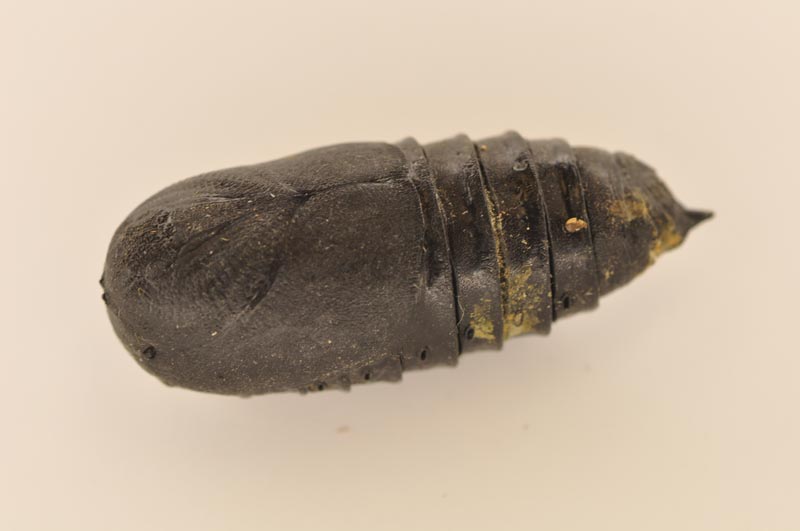
Adults do not have functioning moth parts so as adults they will not feed.
The origin of Gonimbrasia is currently unknown. The species zambesina is currently unknown.
The Bulls Eye Silkmoth is found in the broad-leaved woodland areas along the Zambezi River.
Males find females at night with the aid of the female pheromone trail. After mating, the females go around and lay eggs in groups of about a dozen on the host plant. The larvae feed gregariously, in groups, on the host plant until they are ready to pupate.
There are two generations a year; adults can be found once in the fall and a second time in the winter.
Larvae in the genus Gonimbrasia, in which the Bulls Eye Silkmoth belongs, develop into a large caterpillar which is edible and is considered an important protein source for millions of indigenous South Africans.